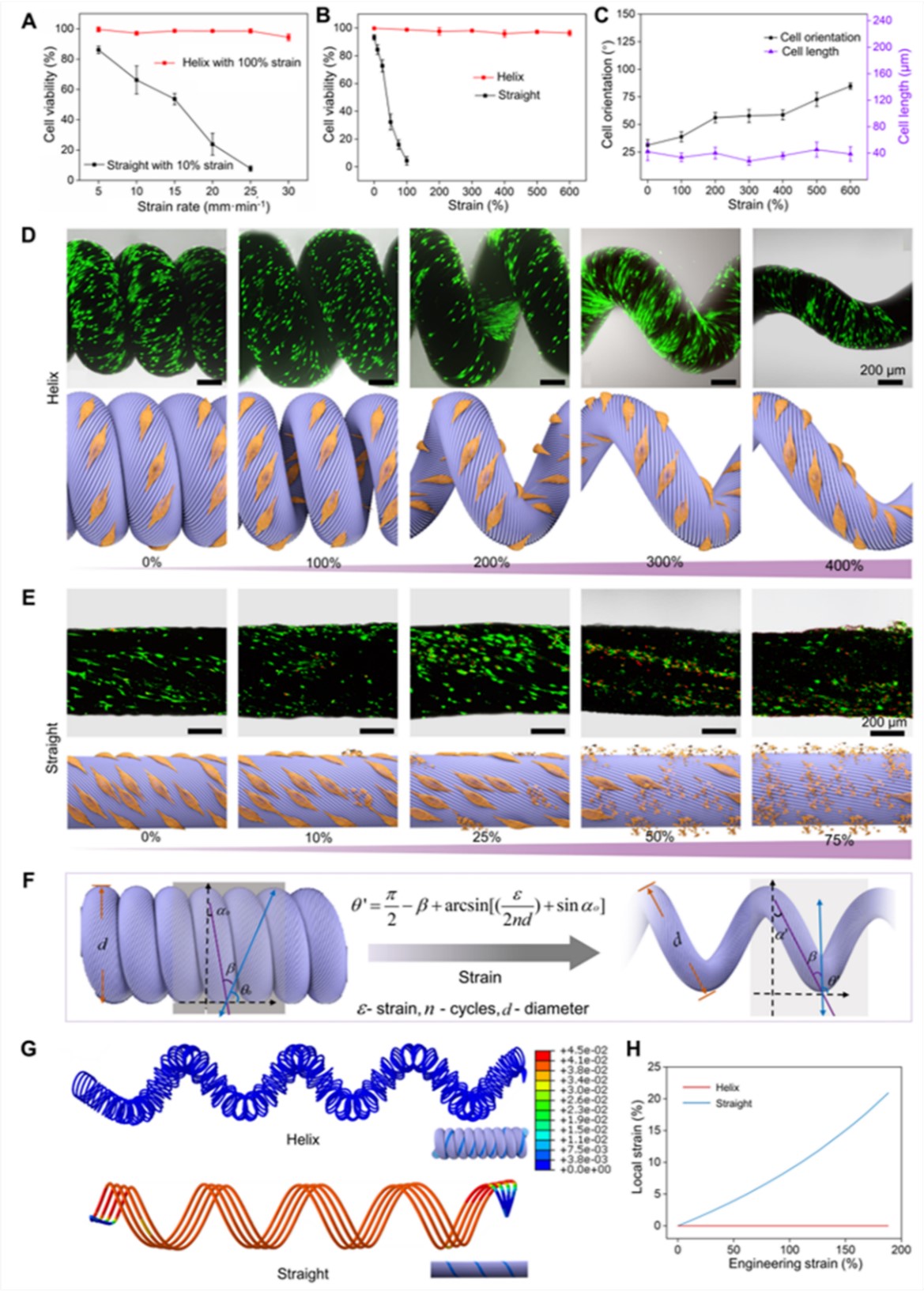Recently, a research team by Zhao Yong from the School of Chemistry of Beihang University, in collaboration with the team by Kong Liang from Air Force Medical University (AFMU), has published their research findings, entitled “Bioinspired stretchable helical nanofiber yarn scaffold for locomotive tissue dynamic regeneration”, in Matter, a well-known journal in the field of material sciences. The research teams broke the precedent fixed treatment model for locomotive tissue repair and developed a bioinspired stretchable helical scaffold.
Wang Yaqiong, a Ph.D. candidate from the School of Chemistry of Beihang, Dr. Liu Fuwei from AFMU, and Associate Professor Wang Nü from Beihang are the co-first authors. Prof. Zhao Yong and Prof. Kong Liang are the corresponding authors.
Conventional long-term immobilization therapy of injured locomotive tissues usually leads to tissue atrophy, or worse, bedsores, due to slow blood circulation and lack of adequate mechanical stimulation. The challenge to conquering this contradiction is how to balance fixation therapy and dynamic tissue repairing. In this connection, during the restoration of injured tissue, the reconstruction of the tissue is one thing to be examined and affording a stable structural and mechanical microenvironment for cell proliferation and construction of new tissue formation in vivo is another thing to be considered. Enlighted by the hierarchical structure of natural biological tissue, the researchers developed a hierarchical helical yarn scaffold with high stretchability and good biocompatibility (See Fig. 1).

Fig. 1 Design of bioinspired stretchable helical scaffold
They also explored the growing state of cells cultured on the scaffold through cyclical strain and 3D real-time observation, studying the dynamics, movement, and proliferation (see Fig. 2). This has proved the biological viability and stability of the scaffold.

Fig. 2 Viability of cells under cyclic strains
After the helical scaffold was implanted into rats with a ruptured tendon, they could walk without fixation like normal rats, and the injured tendon repair was accelerated at the same time. This helical scaffold breaks the inherent mindset of a fixation repair mode and makes possible the reconstruction of locomotive tissue defects even with moderate motion exercise (see Fig. 3).

Fig. 3 Histological analysis of rats' leg muscles after implanted the scaffold
In general, the study proposes a new thinking about the construction of stretchable scaffolds with superior mechanical properties for repairing locomotive tissue injuries. This will guide the development of relevant engineered material that is expected to have further applications in regenerative medicine, sports medicine, and field and battlefield emergency treatment.
The work was supported by the National Natural Science Foundation of China and the Basic Research Funds for Universities of the Central Government. It was also supported by scholars and experts from educational institutes both at home and abroad.
Link to the article:
https://doi.org/10.1016/j.matt.2022.09.011
Reported by Liu Naipeng
Reviewed by Li Hongjie
Edited by Jia Aiping
Translated by Li Yifan

